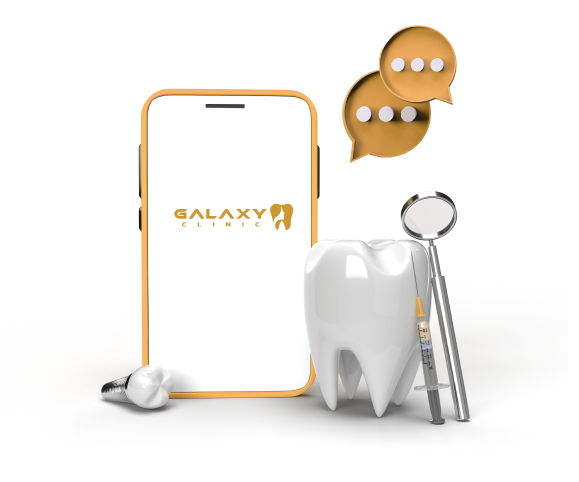Gingivitis commonly arises from a bacterial infection resulting from an excess of plaque. In certain instances, viral or fungal infections can also be the causative factors. The course of treatment may vary based on the extent of the condition.
Bleeding, reddened, or swollen gums can be the first signs of gingivitis. Typically, these changes are observed during regular brushing or flossing. Healthy gums exhibit a pink hue, while those affected by gingivitis may take on a red to dark red appearance. It’s important to note that, despite gum irritation, the teeth remain securely anchored in their positions.
Types of gingivitis
Gingivitis typically arises from the excessive buildup of dental plaque, often associated with inadequate dental hygiene. Various contributing factors cause the appearance of the first signs of gingivitis include:
- The usage of particular medications, such as phenytoin, cyclosporine, calcium channel blockers, and oral or injectable contraceptives. These medications may induce or exacerbate gingivitis by causing an overgrowth of gum tissue and making plaque challenging to remove.
- Severe deficiencies of vitamin C, although this occurrence is rare in the United States.
- Fluctuations in hormones, such as those occurring during pregnancy and menopause.thrus
- Medical conditions like leukemia.
- Exposure to heavy metals like nickel, which may be present in certain jewelry.
- Contact with bismuth, found in some cosmetic products.
Additionally, there are specific types of gum infections that can lead to start the first signs of gingivitis, unrelated to plaque buildup.
These encompass:
Specific viral or fungal infections, like thrush.
Res Impaction of a tooth, which occurs when a tooth doesn’t fully emerge, potentially trapping debris under the gum flap and causing gingivitis.
Discover our services in Galaxy Clinic in Aqaba
Causes of gingivitis
Your gums are actually connected to your teeth at a point lower than the visible gum line, creating a small space known as a sulcus.
Food particles and plaque have the potential to become entrapped in this crevice, which may ultimately result in the first signs of gingivitis, marking the initial indicators of gingivitis. Plaque, being a thin bacterial film, persistently accumulates on the tooth surfaces. As time passes, it solidifies and evolves into tartar. When plaque extends beneath the gum line, it can give rise to a gum infection.
If left unaddressed, gingivitis can result in the separation of the gums from the teeth, which may lead to:
- Damage to the soft tissues and the supportive bone structure of the teeth.
- The tooth becoming loose and unstable.
- Ultimately, the loss of the tooth if the infection progresses.
Factors That Increase the Risk of Gingivitis

The subsequent factors elevate the risk of developing the first signs of gingivitis and periodontitis:
- Smoking or using smokeless tobacco products
- Diabetes
- Particular medications, including:
- Oral contraceptives
- Steroids
- Anticonvulsants
- Calcium channel blockers
- Chemotherapy drugs
- Misalignment of teeth
- Poorly fitting dental appliances
- Damaged fillings
- Pregnancy
- Genetic predisposition
- Weakened immunity, such as in the case of HIV.
What are the indications of gingivitis and periodontitis?
Many individuals may not realize they have gum disease, as it’s possible to have gingivitis without experiencing any noticeable symptoms. However, the following first signs of gingivitis can be indicative of gum disease:
- Gums that appear red, tender, or swollen.
- Gums that bleed during tooth brushing or flossing.
- Gums that have receded from the teeth.
- Loosening of teeth.
- Alteration in how your teeth align when biting (malocclusion).
- Presence of pus between the teeth and gums.
- Discomfort or pain while chewing.
- Teeth sensitivity.
- Partial dentures that no longer fit properly.
- Persistent bad breath that persists even after brushing your teeth.
stress can impact the first signs of gingivitis
Stress has the potential to weaken your immune system, which is responsible for safeguarding your body against diseases and infections. This can be particularly problematic in terms of your oral health. When stress takes a toll on your immune system, the harmful bacteria in your mouth can take advantage of the situation, leading to one of the first signs of gingivitis and gum problems. This initial gum infection is termed gingivitis and is manageable in its early stages.
Nonetheless, if not addressed, it can advance to a more critical oral health condition recognized as gum disease. Consequently, if you’ve been experiencing stress recently, it’s vital to give extra attention to your gum care by adhering to a thorough dental hygiene regimen, including flossing. If you notice bleeding gums when you floss, it’s advisable to promptly consult your dentist.
How smoking relates to the first signs of gingivitis?
Smoking compromises your body’s ability to combat infections, weakening your immune system. This diminished immunity makes it more challenging to fend off the first signs of gingivitis. Additionally, if you already have gum damage, smoking hinders the healing process.
What does this mean if you are a smoker?
- Individuals who smoke face a twofold increased risk of developing gum disease in comparison to non-smokers.
- The greater the number of cigarettes you smoke, the elevated your risk of developing gum disease.
- The longer you continue smoking, the greater your susceptibility to gum disease.
- Treatments for gum disease may not be as effective for individuals who smoke.
- Regardless of the form of tobacco use—whether it’s cigarettes, pipes, or smokeless (chewing) tobacco—your risk of gum disease is elevated.
How is the diagnosis of gingivitis established?
In the course of a dental examination, a small ruler is used to gently assess your gums. This probing method is employed to evaluate any signs of inflammation and to measure the depth of pockets around your teeth, with a usual range of 1 to 3 millimeters.
Your dentist may also recommend X-rays to assess potential bone loss. It’s advisable to engage in a discussion with your dentist about your risk factors for gum disease and share any associated symptoms, as this can aid in the diagnosis of gingivitis. If gingivitis is detected, you might be referred to a periodontist, a specialized dentist focusing on the treatment of gum diseases.
Always do not forget to consult your dentist for better oral health.
References:
https://www.healthline.com/health/gingivitis#diagnosis


